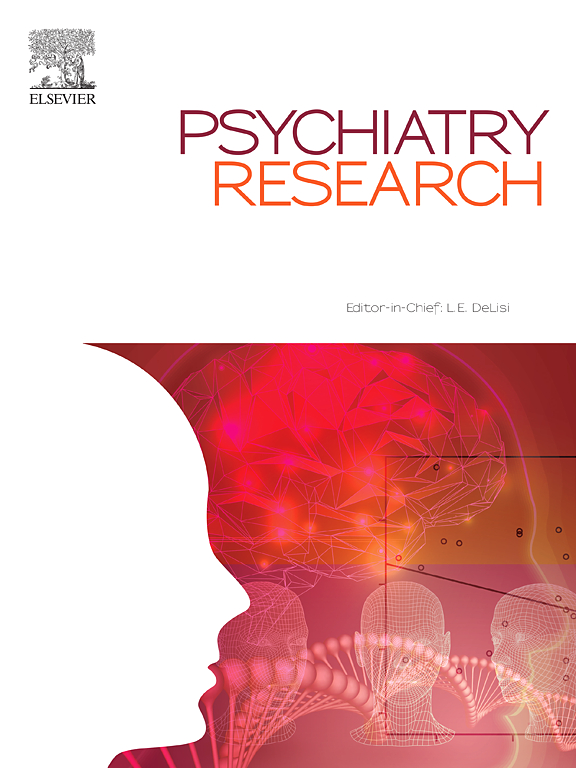The association between medication adherence and the risk of different violent behaviors: A cohort study in young patients with severe mental illness
IF 4.2
2区 医学
Q1 PSYCHIATRY
引用次数: 0
Abstract
Background
Whether poor medication adherence increases the risk of violent behaviors in people with severe mental illness (SMI) is a critical public health issue, but it has not yet been explored in a population of young patients with SMI. This study aims to analyze whether low medication adherence increases the risk of violence to others and self-inflicted violence among young patients with SMI.
Methods
Data for this study was obtained from a community-based cohort of patients with SMI from 2006 to 2018 in western China. The association between medication adherence and various violent behaviors was analyzed using a multilevel Cox proportional risk regression model and restricted mean survival time.
Results
A total of 52,917 young patients with SMI were included in this study. The incidences were 15.6 % for the total violence to others and 1.9 % for the total self-inflicted violence in the low medication adherence group, both higher than that in the non-low adherence group. After controlling confounders, low medication adherence increased the risk of total violence to others (HR=1.673, 95 % CI 1.582–1.768), minor nuisance (HR=1.770, 95 % CI 1.670–1.876), violating APS law (HR=1.754, 95 % CI 1.542–1.995), total self-inflicted violence (HR=1.654, 95 % CI 1.423–1.923), non-suicidal self-injury (HR=1.628, 95 % CI 1.362–1.947), and suicide attempt (HR=1.628, 95 % CI 1.322–2.004).
Conclusions
This study found that low medication adherence increased the risk of violent behaviors in young patients with SMI, suggesting the need for future targeted measures to identify and intervene in the risk of various types of violence that may occur in patients.
求助全文
约1分钟内获得全文
求助全文
来源期刊

Psychiatry Research
医学-精神病学
CiteScore
17.40
自引率
1.80%
发文量
527
审稿时长
57 days
期刊介绍:
Psychiatry Research offers swift publication of comprehensive research reports and reviews within the field of psychiatry.
The scope of the journal encompasses:
Biochemical, physiological, neuroanatomic, genetic, neurocognitive, and psychosocial determinants of psychiatric disorders.
Diagnostic assessments of psychiatric disorders.
Evaluations that pursue hypotheses about the cause or causes of psychiatric diseases.
Evaluations of pharmacologic and non-pharmacologic psychiatric treatments.
Basic neuroscience studies related to animal or neurochemical models for psychiatric disorders.
Methodological advances, such as instrumentation, clinical scales, and assays directly applicable to psychiatric research.
 求助内容:
求助内容: 应助结果提醒方式:
应助结果提醒方式:


